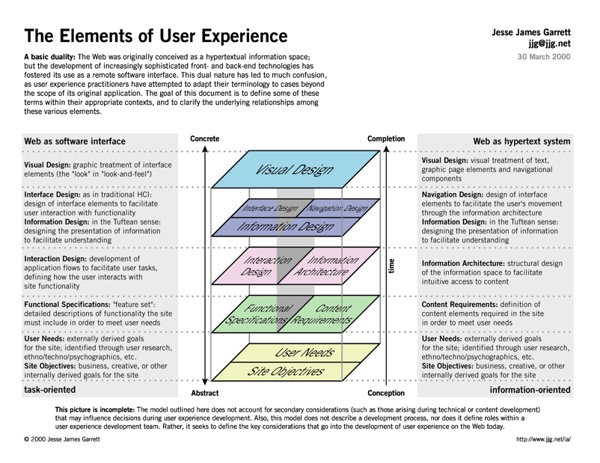



Boxes and Arrows: The design behind the design UX: Psychology of great design – part 1 The World Wide Web turned 20 in April 2013. In its first 20 years the web matured from a largely static medium into the rich, collaborative and wonderfully interactive medium we know today. As such, the interactions and relationships between users and systems have become increasingly complex. Consequently, web designers need to understand the experience of the website or app they are making. Designers should consider who is using it, what they need to do and ultimately if the design makes their users’ experience easier or, ideally, more delightful. Essentially, this is what user experience (often abbreviated to UX) is focused upon: studying how a person reacts or feels when using a product or service and how this experience can be improved. The term ‘user experience’ was originally coined by Don Norman while he was Vice President of the Advanced Technology Group at Apple: “I invented the term because I thought human interface and usability were too narrow. > Why is it being made?
UX Design Versus UI Development By Mike Hughes Published: March 21, 2010 “At the heart of the tension between them is the fact that most UI Developers consider themselves—and sometimes rightfully so—to be UI Designers.” One of the more interesting tensions I have observed—since getting into user experience design about five years ago—is the almost sibling-rivalry tension between UX Designers and User Interface (UI) Developers. At the heart of the tension between them is the fact that most UI Developers consider themselves—and sometimes rightfully so—to be UI Designers. When I worked on the Body of Knowledge Task Force for the Society for Technical Communication, the interesting question we wrestled with was: What value does a technical communicator add above what an engineer who writes well offers? “It’s not like we have a monopoly on secrets about design patterns and best practices for user interactions.” Role Definitions Figure 1 illustrates the resultant overlap of traditional UX design skills and UI development skills.
Usability Body of Knowledge UX Myths Our User eXperience (UX) Reading List | UX Passion - UX design agency User experience design, mobile apps, social media, and business development – all these are part of daily life here at UX Passion. Continuous learning and keeping up with trends is imperative in our industry and one of the consequences of this race and thirst for knowledge is our UX Passion Library. When we started back in 2009 we didn’t have a penny to buy anything expensive, but all the money we earned back then was used for buying books. Yes, good old paper-powered books. We have iPads and Android tablets and we like ebooks as well, but there is a certain something in the touch and feel, well, in the user experience of books. Sit down and relax... Today I’d like to share with you just some of the stuff the UX Passion team is reading. So, here they are in no particular order. Would you like to share what’s on your UX reading list?
User Experience Network Wireframing, Prototyping, Mockuping - What’s the Difference? Introduction I’m very happy to welcome you all to the first part of this online course on wireframing and creating design documentation. I hope you’ll all have fun and learn useful, applicable techniques that will make your everyday work life much easier. I’m Marcin Treder and I currently serve as CEO of the popular User Experience Design Application – UXPin, but I’m also a seasoned User Experience Designer and a manager of User Experience teams. In a series of 7 articles I’ll discuss, in detail, methods of wireframing and, in general, creating design documentation. Articles are meant to be highly practical so expect just a little bit of design philosophy and a lot of real life stories. All the examples of design documentation are created in UXPin – the first ever User Experience Design application. Sign up to UXPin for free (14-day trial) to keep up with my examples. Wireframe, prototype, mockup – what’s the difference? – a display house provides a test drive for future residents Wireframe 1.
Colm Tuite's answer to What are the best resources for learning bleeding-edge web, UI and UX design 52 Weeks of UX 5 Principles of User Experience, Part 1 This is the first of a three-part series highlighting five user experience principles to keep in mind when designing your site. Applying these principles will help provide a great experience for users on your site. After the series we’ll host a live Google+ Hangout On Air on October 9th at 10:30am PT, when we'll put these principles in action by helping an AdSense publisher make UX improvements to their site. Visit the AdSense Google+ page on the 9th to see it live!User experience can make or break your site’s success. Today, we've provided our first two important design tips and techniques to help you identify goals for both your site and its users.1. Step back and first ask yourself, “How can I give my users what they want while getting what I want?” Tips: Some questions to ask yourself when starting out are: How are your users finding your site? Another thing to keep in mind is the information architecture of your site.